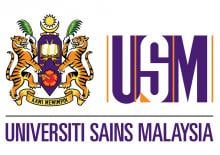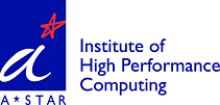Science
News

26 Jun 2008
Summaries of newsworthy papers include Ozone destruction over an Atlantic holiday destination, Understanding four-legged fish, Cut off the food to spite the tumour, Volcanic explosions in the deep Arctic Ocean, It takes two and a feminizer for honeybees

25 Jun 2008
In Nature China this week - Researchers in China have developed a computer algorithm for discovering novel non-coding RNA genes from previously ignored sequences in the human genome and more

24 Jun 2008
USM has signed 8 agreements with national and international corporations to further promote research. This includes commercialization of research, nanotechnology information transfer, biotechnology research, new products for the construction industry, clinical mass spectrometry services for the region and more.

22 Jun 2008
Summaries of newsworthy papers include Carbon capture by land and by sea, Gene addiction reveals cancer’s Achilles’ heel, Automated microfluidics-based screening of C. elegans and Improving stroke therapy

22 Jun 2008
Today, Universiti Sains Malaysia launched the Science and Arts Innovation Space in a move to strengthen innovation and retain the best talents, while attracting international collaborators to Malaysia’s burgeoning knowledge industry.

18 Jun 2008
To celebrate the close relationship between the Kingdom of Saudi Arabia and Waseda University, to deepen the relationship as well as to stimulate further exchanges in research and between students, Waseda University is hosting an week long event known as "The Saudi Arabia Day."

18 Jun 2008
Summaries of papers: Saturn's second aurora, Magnetic resonance images in colour, Insight into each end of the chordate lineage, 'Identical twins', years apart, Solution for global puzzle of nitrogen-loving trees, Ticking of the segmentation clock, Warming and rising of oceans, Taking the strain in electronic devices and In pursuit of happiness

18 Jun 2008
In Nature China this week - Researchers in Shanghai identify ion channels in the brain that have a critical role in synaptic development, as well as learning and memory

17 Jun 2008
USM, Penang, Malaysia - USM forged an international collaborative venture with the signing of a Memorandum of Understanding with the University of The South Pacific (USP), Suva, Fiji.

17 Jun 2008
Malaysia produce 70 million tons of organic wastes annually. Most of these are either incinerated or dumped in landfill and both of which have serious impact on the environment. A research is conducted at Universiti Malaysia Sarawak to reutilise the wastes and explore their potential as energy sources.

15 Jun 2008
Typically, palm oil quality is determined in a destructive manner using wet chemical analysis, which can be costly, time consuming and error prone. Here, researchers developed an automated technique of estimating quality based on fruit colour captured in JPEG format.

15 Jun 2008
Summaries of papers include Resolving photon numbers, Microstructures stay on track, Muscle degeneration, Measuring glacial deep-water flow, The unexpected metal, Seafloor’s influence on biodiversity and Expressing fear enhances perception

12 Jun 2008
The Institute of High Performance Computing (IHPC) has initiated an 18-month research consortium valued at SGD1.5 million to leverage upon a centralised source of expertise in the area of wireless communication, high speed electronic design, and analysis of electromagnetic compatibility and interference.

11 Jun 2008
Summaries of newsworthy papers include Locating the comfort zone, We take more risks when potential pay-offs are well defined, Sequence of response, The carbene catchers, Anderson localization of matter waves and Leaf the temperature alone

11 Jun 2008
In a press release issued today, Keio University scientists have shown that pigeons are able to discriminate video images of themselves, paintings of certain painters (Van Gogh vs Chagall) and more. The video image discrimination ability is higher than 3-year-old children. (Pictures available)

11 Jun 2008
Keio University applied the technology “to operate the computer using brain images released last year and succeeds in enabling a disabled person suffering muscle disorder to stroll through “Second Life®, to walk towards the avatar of a student and to have a conversation with the student using the “voice chat” function.

11 Jun 2008
Keio University is now updating the permanent address database of its foreign graduates. Foreign students who have studied at Keio University are urged to register their present contact details.

11 Jun 2008
Call for papers - Theme: Realisation of Biodiversity Potentials Through Applied Biology

11 Jun 2008
In Nature China this week - A skeleton found in Liaoning province provides a new insight into the evolution and migration of modern humans in East Asia and more research stories.

10 Jun 2008
Penang, Malaysia - In a press conference held today, University Science Malaysia scientists unveil their research into the healing properties of turmeric on skin tumours and wounds.

10 Jun 2008
Advances in Monolithic Microwave Integrated Circuits for Wireless Systems: Modeling and Design Technologies.

10 Jun 2008
The Uganda Conference for Science Communication 2008 will take place November 23rd to 26th at the Imperial Royale Hotel in Kampala.

08 Jun 2008
Summaries of newsworthy papers include Neuroscience: Helping seizures with acidity, Medicine: A drug against blood cancer may also fight lupus and Immunology: Zipping to sites of infection

05 Jun 2008
Potato varieties capable of withstanding early planting conditions (high temperature/heat stress) can allow taking rice-potato-wheat as sequential crops in the region.

05 Jun 2008
The present study was conducted to assess the genetic divergence in 29 potato genotypes (parental lines) based on 20 characters and to find out relationship between genetic diversity and tuber yield.

05 Jun 2008
Researchers have found a cheaper and more feasible technique for parent selection in tetraploid potatoes.

05 Jun 2008
The need for efficient crops is essential to feed a growing population. This paper shows different plant species and potato cultivars differed in nutrient use efficiency with the lowest potassium efficiency for potato followed by wheat and sugar beet.

05 Jun 2008
This paper presents the findings of a study involving some common Ayurvedic medicines, which revealed the presence of heavy metals and synthetic steroids that were in some cases responsible for significant morbidity among those who consumed them.

05 Jun 2008
Selection based on plant vigour, foliage maturity, desirable tuber traits, high family mean tuber yield supplemented with late blight resistance is recommended for developing potato varieties for north-central plains

05 Jun 2008
Borneo's Dolphins are finally getting the attention they needed. On 15 May 2008, a collaborative effort for the conservation of these animals was forged between Sarawak Shell Berhad, Universiti Malaysia Sarawak and Sarawak Forestry Corporation.
Giants in history
Chinese biochemist Chi Che Wang (1894 - 1979), one of the first Chinese women to study abroad, advanced to prominent research positions at American institutions including the University of Chicago and the Northwestern University Medical School.
Ruby Sakae Hirose (1904 – 1960) was a Japanese-American scientist whose research contributed significantly to our understanding of blood clotting, allergies and cancer.
Chinese electron microscopy specialist Li Fanghua (6 January 1932 – 24 January 2020) facilitated the high-resolution imaging of crystal structures by eliminating interference.
Sálim Moizuddin Abdul Ali (12 November 1896 – 20 June 1987), commonly referred to as the Birdman of India, was the first person to conduct systematic surveys of birds from across India.
Haisako Koyama (1916 – 1997) was a Japanese solar observer whose dedication to recording sunspots – cooler parts of the sun’s surface that appear dark – produced a sunspot record of historic importance.
Michiaki Takahashi (17 February 1928 – 16 December 2013) was a Japanese virologist who developed the first chickenpox vaccine.
Toshiko Yuasa (11 December 1909 – 1 February 1980) was the first Japanese female physicist whose research on radioactivity shed light on beta decay – the process in which an atom emits a beta particle (electron) and turns into a different element.
Angelita Castro Kelly (1942-2015) was the first female Mission Operations Manager (MOM) of NASA. She spearheaded and supervised the Earth Observing System missions during its developmental stage.
Malaysia’s first astrophysicist, Mazlan binti Othman (born 11 December 1951) was instrumental in launching the country’s first microsatellite, and in sending Malaysia’s first astronaut, Sheikh Muszaphar Shukor, into space.
Known as Mr. Natural Rubber, chemist and researcher B. C. Shekhar (17 November 1929 – 6 September 2006) introduced a number of technical innovations that helped put Malaysia’s natural rubber industry on the world map.
Shinichiro Tomonaga (31 March 1906 – 8 July 1979), together with Richard Feynman and Julian Schwinger, was awarded the Nobel Prize in Physics in 1965, for their contributions to advance the field of quantum electrodynamics. Tomonaga was also a strong proponent of peace, who actively campaigned against the proliferation of nuclear weapons and promoted the peaceful use of nuclear energy.
South Korean theoretical physicist Daniel Chonghan Hong (3 March 1956 – 6 July 2002) achieved fame in the public sphere through his research into the physics of popcorn.
Japanese chemist Kenichi Fukui (4 October 1918 – 9 January 1998) was the first Asian scientist to be awarded the Nobel Prize in Chemistry. Together with Roald Hoffman, he received this honour in 1981 for his independent research into the mechanisms of chemical reactions.
Chinese palaeontologist, archaeologist and anthropologist Pei Wenzhong (January 19, 1904 – September 18, 1982) is regarded as a founder of Chinese anthropology.
Physicist Narinder Singh Kapany (31 October 1926 – 4 December 2020) pioneered the use of optical fibres to transmit images, and founded several optical technology companies. Born in Punjab, India, he worked at a local optical instruments factory before moving to London for PhD studies at Imperial College. There, he devised a flexible fibrescope to convey images along bundles of glass fibres.
Japanese physicist Ukichiro Nakaya (1900-1962) made the world’s first artificial snowflakes. He started his research on snow crystals in the early 1930s at Hokkaido University, where there is an unlimited supply of natural snow in winter. By taking over 3,000 photographs, he established a classification of natural snow crystals and described their relationship with weather conditions.
The field of solid-state ionics originated in Europe, but Takehiko Takahashi of Nagoya University in Japan was the first to coin the term ‘solid ionics’ in 1967. ‘Solid-state ionics’ first appeared in 1971 in another of his papers, and was likely a play on ‘solid-state electronics’, another rapidly growing field at the time.
Charles Kuen Kao (Nov. 4, 1933 to Sept. 23, 2018) was an engineer who is regarded as the father of fibre optics. His work in the 1960s on long distance signal transmission using very pure glass fibres revolutionized telecommunications, enabling innovations such as the Internet.
Chika Kuroda (24 March 1884 – 8 November 1968) was a Japanese chemist whose research focussed on the structures of natural pigments.
Motoo Kimura (13 November 1924 – 13 November 1994) was a Japanese theoretical population geneticist who is best remembered for developing the neutral theory of molecular evolution.
Meghnad Saha (6 October 1893 – 16 February 1956) was an Indian astrophysicist best known for formulating the Saha ionization equation which describes the chemical and physical properties of stars.
Sir Jagadish Chandra Bose (30 November 1858 – 23 November 1937) was a scientist and inventor who contributed to a wide range of scientific fields such as physics, botany and biology.
Osamu Shimomura (27 August 1928 – 19 October 2018) was a Japanese organic chemist and marine biologist who dedicated his career to understanding how organisms emitted light.
Subrahmanyan Chandrasekhar (19 October 1910 – 21 August 1995) was an Indian astrophysicist who studied the structure and evolution of stars.
Joo-myung Seok (November 13, 1908 – October 6, 1950) was a Korean butterfly entomologist who made important contributions to the taxonomy of the native butterfly species in Korea.
Mathematician Maryam Mirzakhani (12 May 1977 – 14 July 2017) was the first and only woman and Iranian to date to win the Fields Medal in 2014 for her work on curved surfaces.
Sir Chandrasekhara Venkata Raman (7 November 1888 – 21 November 1970) was an Indian physicist who performed ground-breaking research in the field of light-scattering.
Mohammad Abdus Salam (29 January 1926 – 21 November 1996) was a theoretical physicist and the first Pakistani to receive a Nobel Prize in science.
Srinivasa Ramanujan (22 December 1887 – 26 April 1920) was a math prodigy and widely considered one of India’s greatest mathematicians. Despite having almost no formal training in mathematics, he made substantial contributions to mathematical analysis, number theory, infinite series and continued fractions.
Gopalasamudram Narayanan Ramachandran (8 October 1922 – 7 April 2001) is best known for developing the Ramachandran plot to understand the structure of short chains of amino acids, known as peptides.
Hitoshi Kihara (1893 – 1986) was one of the most famous Japanese geneticists of the 20th century. One of his most significant contributions was identifying sex chromosomes (X and Y) in flowering plants.
Chien-Shiung Wu (31 May 1912 – 16 February 1997) was an experimental physicist who made several important contributions to nuclear physics. Wu worked on the Manhattan Project – a top-secret program for the production of nuclear weapons during World War II and helped to develop a process for separating uranium into U235 and U238.
Meemann Chang (born 17 April 1936) is a Chinese palaeontologist who studied the fossils of ancient fish to understand the evolution of life. By examining fossils, she uncovered new insights on how vertebrates, animals with a backbone, migrated from the sea and became adapted to live on land.
Bibha Chowdhuri (1913 – 2 June 1991) was an Indian physicist who researched on particle physics and cosmic rays. In 1936, she was the only female to complete a M.Sc. degree at the University of Calcutta.
Lin Lanying (7 February 1918 – 4 March 2003) was a Chinese material engineer remembered for her contributions to the field of semiconductor and aerospace materials. Lanying was born into a family who did not believe in educating girls and she was not allowed to go to school.
Japanese geochemist Katsuko Saruhashi developed the first method and tools for measuring carbon dioxide in seawater





































